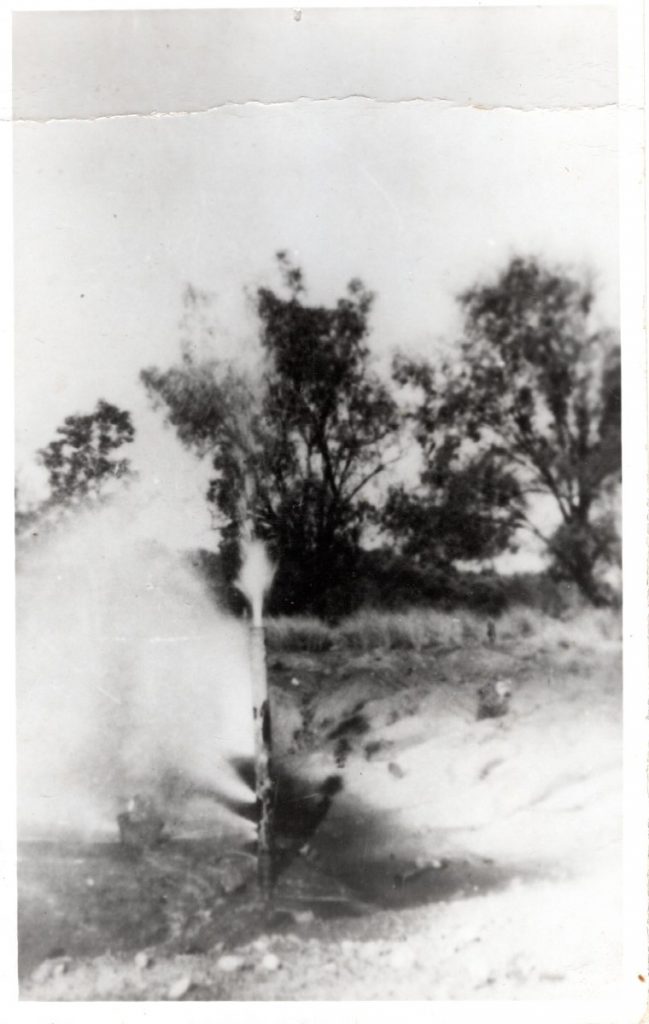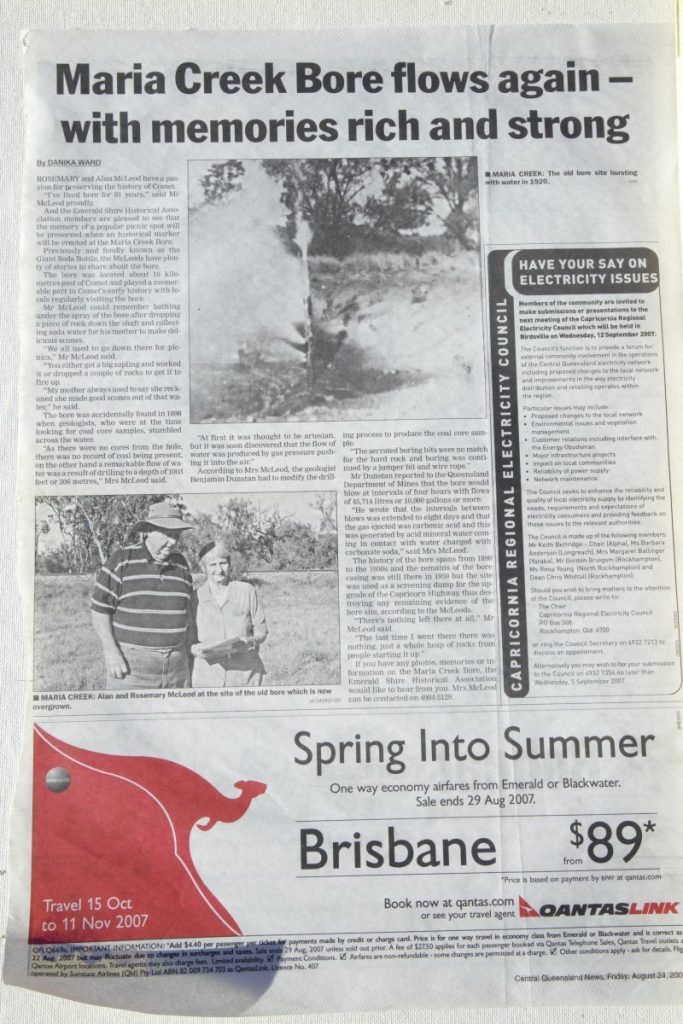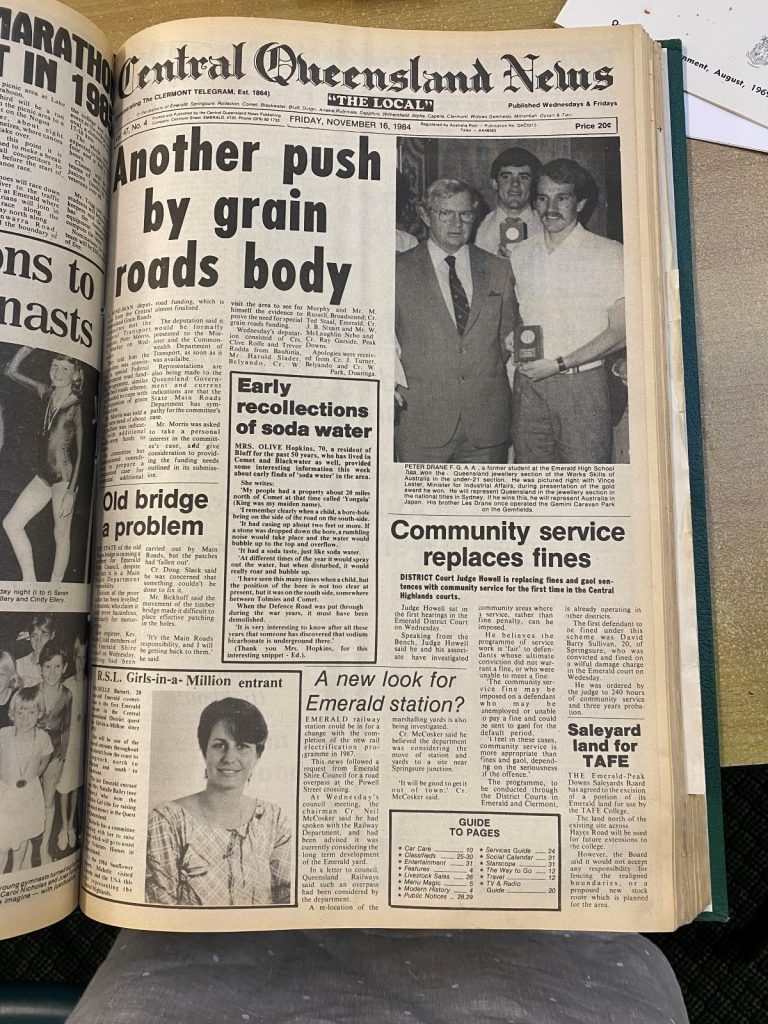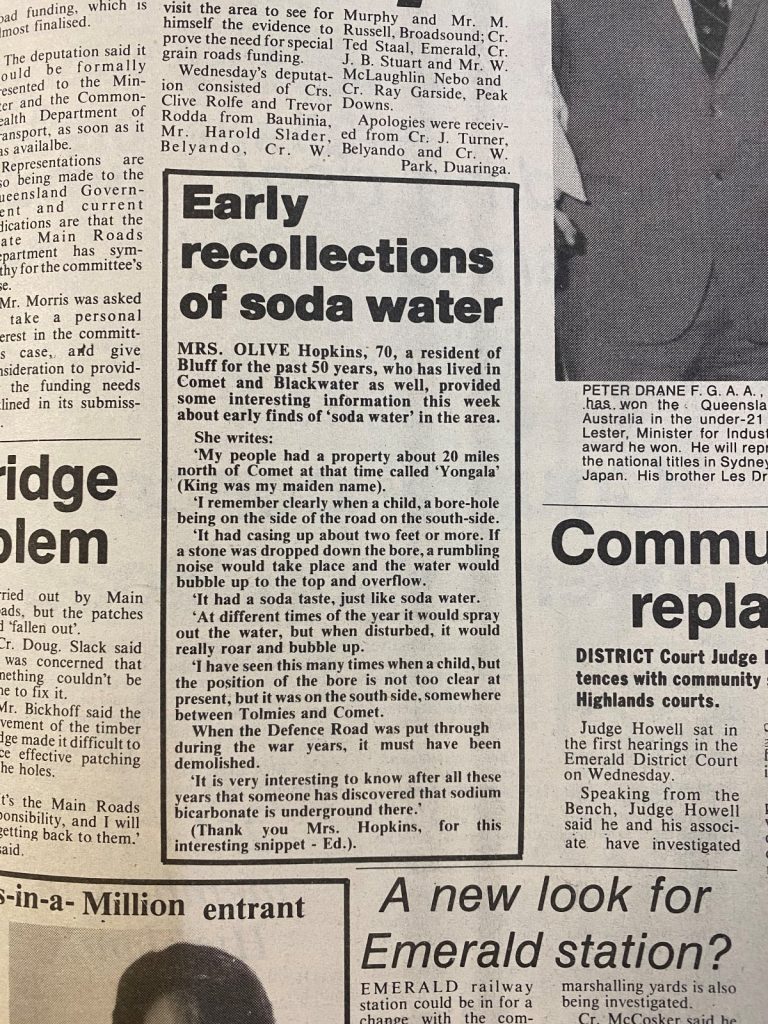The story of a giant natural soda bottle or how coal exploration resulted in the world’s best scones.
In the 1870s, workers constructing the nearby railway from Rockhampton to the west needed coal to fuel their steam trains.
Hopes to find it nearby were high. After all, explorer Ludwig Leichhardt had already found coal seams along the Mackenzie River not far from the site in 1845.
Workers dug shafts in the Tolmies Range, about five kilometres to the east, up to 1893. Most of them were unsuccessful. One of the shafts, near the old Tolmies township, was 24 metres or 80 feet deep. In 1876, it claimed a worker’s life after he inhaled methane gas in the deep shaft.
Government geologist Mr A Gibb Maitland did not give up on the search for coal. Ambitiously, he recommended sinking a bore 305 metres or 1,000 feet deep at an existing shaft at Maria Creek in 1898.
The original shaft was dug two decades earlier in 1877. It was only 3.6 metres deep and it is unclear whether it served as a source for coal or water. Its proximity to the Maria Creek railway worker’s hotel indicates the latter.
When the drilling rig commenced work, it became clear that the serrated boring bits were no match for the location’s hard rock. Workers quickly moved to a different jumper bit and wire rope. As a result of using this method, core samples could not be obtained. To this day there is no record of coal from the bore. But the deep bore brought the giant soda bottle to life.
Astonished by the Geysir-like high-pressure flow, workers believed to have found artesian water. It later proved to be gas pressure that forced the water through the bore casing and high into the air.
Geologist Mr Benjamin Dunstan reported that it would erupt at four-hour intervals. Flows could be as high as 10,000 gallons or more than 45,500 litres. Over time, the eruptions decreased to eight-day intervals.
This is when Maria Creek bore became known as the giant soda bottle. The gas ejected was carbonic acid, the same ingredient that makes a soft drink bubbly. According to the geologist’s report, it was generated from acid mineral water meeting water charged with carbonate of soda.
To this day locals share fond memories and tales of children bathing under the spray. And how, used as a baking ingredient, the soda water from Maria Creek bore would make the world’s best scones.
Remains of the bore casing could still be found in 1959 but were likely destroyed while the site was used as a stockpile for roadworks on the Capricorn Highway.









